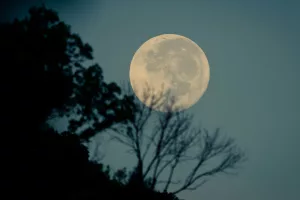Astronomy enthusiasts and stargazers alike flock to the Southern Hemisphere for its unparalleled views of the night sky. With vast stretches of uninhabited land and minimal light pollution, the Southern Hemisphere offers some of the best stargazing opportunities in the world. New Zealand, Chile, Australia, South Africa, and Argentina are among the top destinations for those seeking a celestial experience like no other. Let’s dive deeper into what makes these locations so special and how you can make the most of your stargazing adventure. New Zealand is a treasure trove for stargazers, particularly on the South Island. Renowned for its dark skies and clear nights, it offers a prime location for observing celestial phenomena. Lake Tekapo and the Aoraki Mackenzie International Dark Sky Reserve stand out as popular spots for astrophotography. The South Island’s remote location and commitment to preserving its dark sky status make it a haven for those seeking pristine views of the stars.
Tips for Stargazing in New Zealand
- Best Time to Visit: The months of April to September offer the longest nights, providing more hours to enjoy the stars. The winter months are particularly rewarding, as they offer the clearest skies.
- Packing Essentials: Bring warm clothing, as temperatures can drop significantly at night, even during summer months. A good pair of binoculars or a telescope can enhance your experience. Don’t forget a thermos of hot coffee or cocoa to keep you warm as you gaze at the stars.
- Local Guides: Consider joining a guided stargazing tour in Lake Tekapo, which often includes telescopes and expert insights. These tours can provide valuable context and help you identify constellations and celestial events.
The Southern Alps provide a stunning backdrop to the celestial display, creating a magical setting for night sky enthusiasts to immerse themselves in the universe’s beauty. The Mount John University Observatory, located above Lake Tekapo, offers public night tours that allow you to explore the skies through powerful telescopes.
Chile is another stargazer’s paradise, home to some of the world’s most advanced observatories, including the Atacama Large Millimeter Array (ALMA) and the La Silla Observatory. The Atacama Desert, with its high altitude and arid conditions, offers crystal-clear views of the Milky Way and neighboring galaxies.
Exploring Chile’s Celestial Wonders
- Unique Conditions: The Atacama’s dry climate and high elevation reduce atmospheric distortion, making it one of the best places on Earth for observing the night sky. This region boasts over 300 clear nights per year, providing ample opportunities for stargazing.
- Observatory Tours: Many observatories, like ALMA, offer public tours that provide a glimpse into the cutting-edge research conducted here. Booking in advance is recommended, as these tours are popular and often fill up quickly.
- Nighttime Photography: The desert’s landscape contrasts beautifully with the starry sky, making it a favorite for astrophotographers. Consider visiting the iconic Valle de la Luna (Valley of the Moon), where the otherworldly landscape enhances the stargazing experience.
The unique geographical features of Chile, such as the Atacama Desert and the Andes Mountains, create ideal conditions for stargazing and astronomical research. Visitors can witness the night sky from some of the highest observatories on Earth, allowing for unparalleled views of distant galaxies and celestial phenomena. For a cultural twist, explore how the ancient Atacama people used the stars for navigation and agriculture.
Australia boasts a number of Dark Sky Reserves and designated stargazing sites, such as the Warrumbungle National Park in New South Wales. The night skies in the Australian Outback are remarkably dark, offering stunning views of the Southern Cross and the Magellanic Clouds.
Stargazing in the Australian Outback
- Best Viewing Spots: Besides Warrumbungle, consider visiting the Central Desert or the Flinders Ranges for equally impressive stargazing. The Uluru-Kata Tjuta National Park also offers breathtaking views of the night sky, with the iconic Uluru rock formation silhouetted against the stars.
- Community Events: Engage with local astronomy clubs or public events, which often host star parties and educational nights. These gatherings are excellent opportunities to meet fellow astronomy enthusiasts and learn from their experiences.
- Camping Under the Stars: Australia’s vast outback offers unique camping opportunities, where you can sleep under a blanket of stars. Consider a stay at Arkaroola Wilderness Sanctuary, where guided night tours offer insights into the southern skies.
The vast outback expanses of Australia provide a peaceful and serene setting for stargazing, with thousands of stars visible to the naked eye. From the rugged terrain of the outback to the pristine beaches along the coast, Australia offers a diverse range of stargazing experiences for both novice and seasoned astronomers. For an extra layer of adventure, embark on a 4WD tour to remote locations where the night sky shines brightest.
South Africa’s Karoo region is a hotspot for stargazing, thanks to its minimal light pollution and clear atmospheric conditions. The South African Astronomical Observatory, located near Cape Town, is a popular destination for both amateur and professional astronomers.
Discovering South Africa’s Night Sky
- Prime Stargazing Locations: Beyond the Karoo, the Sutherland area is known for its exceptionally dark skies. The Southern African Large Telescope (SALT) is one of the largest optical telescopes in the Southern Hemisphere and offers public tours.
- Astronomical Tours: Join a guided tour at the observatory to learn more about South Africa’s contributions to astronomy. These tours often include telescope viewings of planets, nebulae, and distant galaxies.
- Cultural Insights: Discover how local cultures interpret the stars, offering a rich tapestry of stories and constellations unique to the Southern Hemisphere. The San people, one of the oldest cultures in the world, have a deep connection to the stars, which they see as a map of their ancestors.
South Africa’s commitment to preserving its night skies has led to the establishment of stargazing reserves and astronomical research facilities that attract visitors from around the world. The vast landscapes of the Karoo provide a tranquil setting for observing the stars, with the Southern Hemisphere constellations on full display overhead. Make sure to visit during the Southern Hemisphere’s winter months (June to August) for the clearest skies.
Argentina offers exceptional stargazing opportunities, particularly in the northern region, with its Andean mountains. The El Leoncito Astronomical Complex and the Valle de Elqui are renowned for their pristine night skies and optimal viewing conditions.
Stargazing in Argentina’s Andes
- Optimal Conditions: The combination of high altitude and low humidity creates perfect conditions for stargazing. The Pampa Amarilla region is a prime spot for observing the Milky Way and other celestial wonders.
- Historical Sites: Explore the ancient Incan observatories where astronomy played a significant role in culture and agriculture. The Pucara de Tilcara, an archaeological site, offers insights into how the Incas used astronomy for timekeeping and ceremonial purposes.
- Modern Facilities: Visit contemporary astronomical facilities to understand the latest discoveries and research. The Cerro Tololo Inter-American Observatory is open for tours and provides a unique perspective on the universe.
Argentina’s diverse geography, from lush valleys to high-altitude mountain ranges, provides a range of stargazing environments for enthusiasts to explore. Visitors to the Andean region can experience the magic of the night sky, with ancient Incan observatories and modern astronomical facilities offering unique perspectives on the cosmos.
Practical Tips for Stargazing in the Southern Hemisphere
- Prepare for Weather Changes: Nights can be cold even in desert areas, so dress in layers. Always bring a waterproof jacket, as weather can change rapidly in mountainous regions.
- Use a Star Map: Download a star map app to help identify constellations and planets. Apps like SkySafari or Star Walk 2 are user-friendly and provide real-time guidance.
- Plan Around the Moon Phase: Aim to stargaze during a new moon for the darkest skies. Full moons can wash out the stars, so check lunar calendars before scheduling your trip.
- Respect Local Guidelines: Many areas require permits or have specific rules to minimize light pollution—check these in advance. Always follow Leave No Trace principles to preserve the natural environment.
Common Mistakes and How to Avoid Them
- Overpacking Equipment: While it’s tempting to bring all your gear, remember that some of the best stargazing can be done with just your eyes or binoculars. Start simple and only bring what you need for the conditions.
- Forgetting Essentials: Always bring a flashlight with red light capability to preserve your night vision. A headlamp with a red filter can be particularly handy.
- Not Checking Weather Forecasts: Cloud cover can obscure your view, so always check the forecast before heading out. Websites like Clear Outside provide detailed weather predictions for astronomers.
Stargazing in the Southern Hemisphere offers an unparalleled connection to the universe. Whether you’re peering through a telescope at a professional observatory or lying on your back in the middle of the outback, the experience is both humbling and awe-inspiring. Embrace the adventure, prepare wisely, and let the stars guide your journey. As you explore these celestial destinations, remember that the night sky is a shared heritage, connecting us to the past, present, and infinity beyond.



